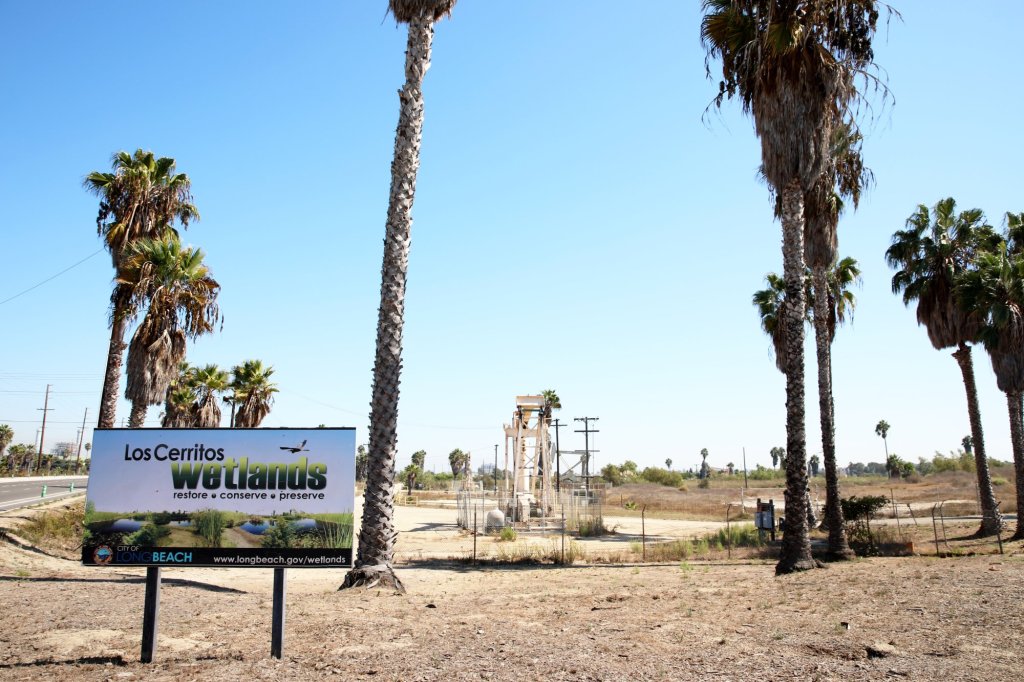California could embrace a groundbreaking program to capture greenhouse gases by planting more trees, restoring wetlands and promoting more carbon-absorbent farming, thanks to proposed legislation that would set a goal of removing 60 million metric tons of carbon dioxide from the air each year.
That goal, if achieved, would be the equivalent of taking more than 13 million gasoline vehicles off the road annually.
While much of the discussion of global-warming solutions focuses on reducing emissions, the process of extracting carbon dioxide from the atmosphere increasingly is seen as the other indispensable component.
“This practice is now viewed by the scientific community as an essential part of solving climate change,” according to a UC Davis fact sheet on carbon sequestration.
There are two basic approaches to carbon capture.
One is technological sequestration, in which greenhouse gas emissions are captured before they leave plant smokestacks, or in which carbon is extracted directly from the atmosphere. Expense is a key issue in both cases, although there is federal funding and proposed state legislation to promote that approach. Assemblywoman Cottie Petrie-Norris, D-Irvine, is an author of two such bills
The second is approach is to push for more natural sequestration, as proposed in a draft bill by Assemblywoman Cristina Garcia, D-Downey.
Here is a look at how these approaches work — or could work.
Isn’t the Earth already absorbing huge amounts of carbon dioxide?
Yes. Forests, grasslands and rangelands absorb about 25% of man-made carbon emissions while the ocean absorbs 25% to 30%, according to UC Davis. But plant-rich landscapes are disappearing, thanks to wildfires and deforestation, and a growing amount of carbon absorbed by the ocean is hurting marine life — including coral — through acidification.
The Amazon rainforest, one of the Earth’s most important “carbon sinks,” is a particular area of concern. A study published March 7 in the journal Nature Climate Change said the Amazon ecosystem is approaching a tipping point toward irreversible die-off, and that in coming decades more than half the rainforest could turn into a savanna.
Projections show the Earth on a path to the potentially devastating temperature increase of 5.4 degrees Fahrenheit (3 degrees Celsius) by 2100, with the 2015 Paris Agreement setting a goal of half that amount. Meeting that target would require cutting 2010 greenhouse gas emissions in half by 2030 and, additionally, removing 1 trillion metric tons of the gases from the atmosphere by 2050, according to United Nations’ Intergovernmental Panel on Climate Change.
How can California promote more natural carbon removal?
Garcia’s draft bill, AB 2649, sets a goal of 60 million metric tons of natural carbon dioxide capture by 2031 and 75 million metric tons by 2036. It would require the Natural Resources Agency to develop programs to meet those goals. While the bill currently has only skeleton language, the full draft is expected to be formally introduced next week.
“The programs should facilitate practices such as compost application, riparian restoration, cover crops, hedgerows, and planned grazing, among other relevant practices,” according to the draft bill, which is being sponsored by The Climate Center.
Trees aren’t mentioned in the bill?
No, but forests are.
“Forests have more potential than any other sector,” said Laurie Wayburn, president of the Pacific Forest Trust, at a Wednesday, March 16, online briefing on natural carbon capture. One key to that is better forest management, including reducing the amount of wildfires, she said.
A report by The Climate Center also calls for more trees to be integrated with farming operations and for more plants along roadways. It also specifies significant opportunities for diverting landfill bound organic waste to grazing fields and farmlands, where it can promote better growth of plants which in turn capture carbon.
What about capturing carbon dioxide before the emissions leave the factory? Or extracting it directly from the atmosphere?
Last November’s Bipartisan Infrastructure Law included $15 billion to promote such projects nationwide. Petrie-Norris’ AB 2944 would streamline the permitting process while AB 1676, which she authored with two Assembly colleagues, would help establish such carbon capture as a priority. On the Senate side, SB 905 would establish demonstration projects for reducing carbon emissions at cement factories, which are a particularly troublesome source of greenhouse gases.
According to AB 1676, such carbon capture could eliminate 60 million metric tons of carbon dioxide in the state annually. That would be in addition to the 60 million metric ton goal for natural carbon removal.
Why are many environmentalists wary of technological carbon capture?
Capturing emissions at factories has been happening since the 1970s, but in limited amounts because of the costs involved. Currently, there are just 26 such operations worldwide, according to Ellie Cohen, CEO of The Climate Center. She cited a study that found 81% of the carbon captured was then used to enhance oil recovery, meaning it was used for a product that increased greenhouse gases.
“So the net benefit is negative (environmentally),” Cohen said.
Removing carbon directly from the air is a less developed technology and costs as much as $600 per ton of carbon, according to an online Q&A with UC Riverside experts. Engineering professor Mihri Ozkan said in order for that process to be viable, the cost would have to be reduced to $100 per ton.
Environmentalists describe both technological approaches as costly and still in development stages, while natural carbon capture can be affordably implemented immediately.
What happens to carbon once it’s captured?
With natural carbon capture, the carbon is absorbed by the plant and then into the soil, where it can remain for decades or centuries.
With technological carbon capture, it can be injected into porous, subterranean rock formations, although environmentalists warn of the possibility of leaks and the vulnerability to earthquakes.
Researchers are also exploring using the captured carbon dioxide to create other products, such as urea, which is used in fertilizer and in the manufacture of plastics, and graphene, which is used to create screens for smart phones.










